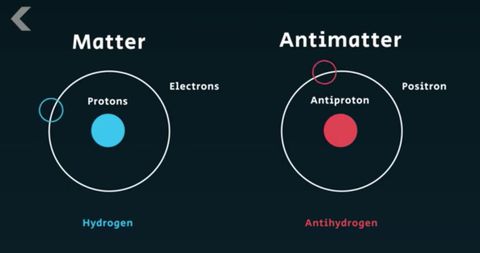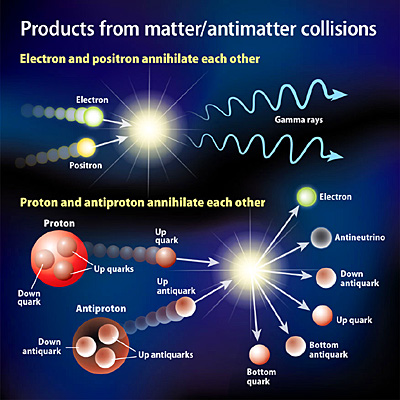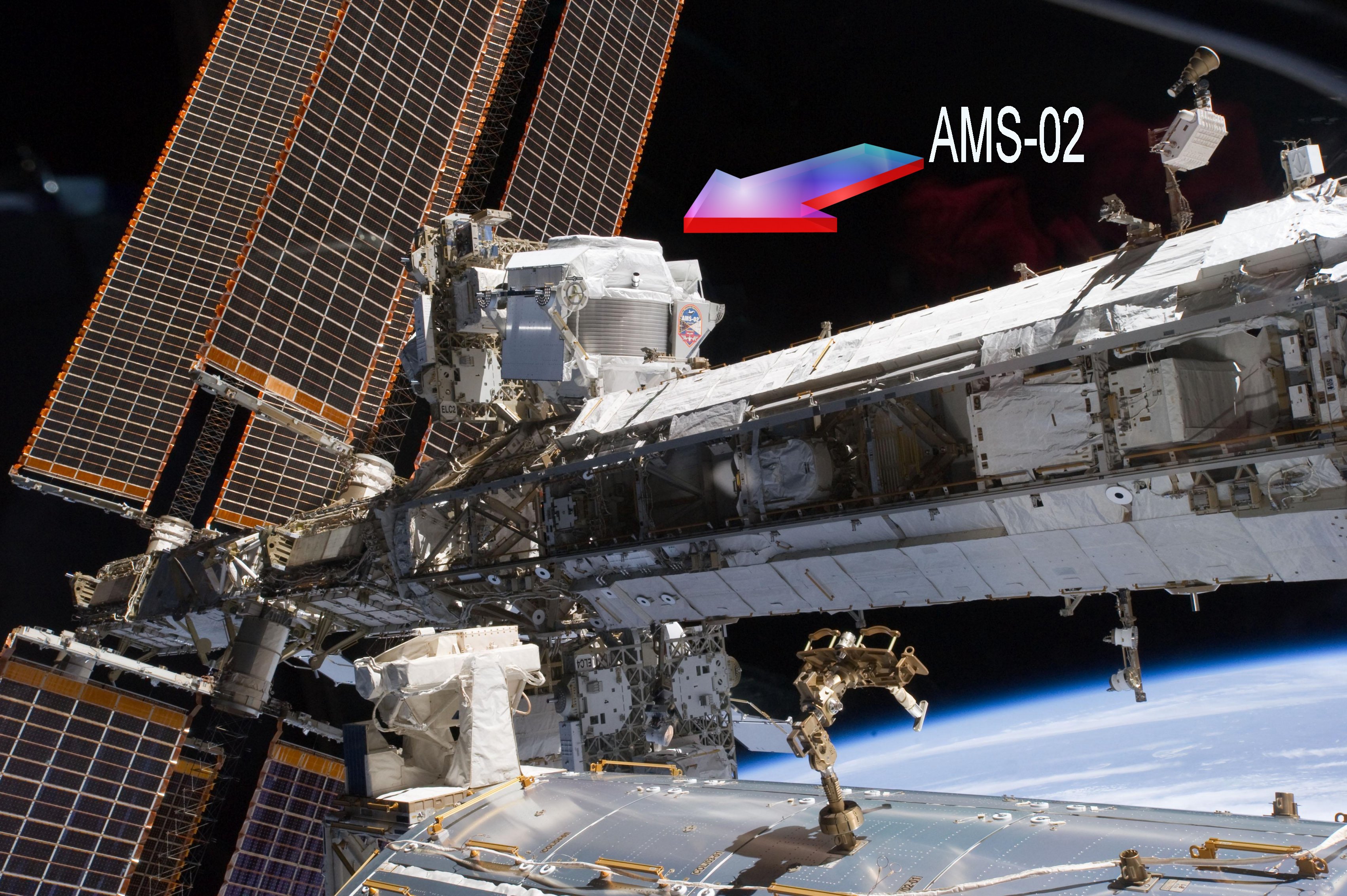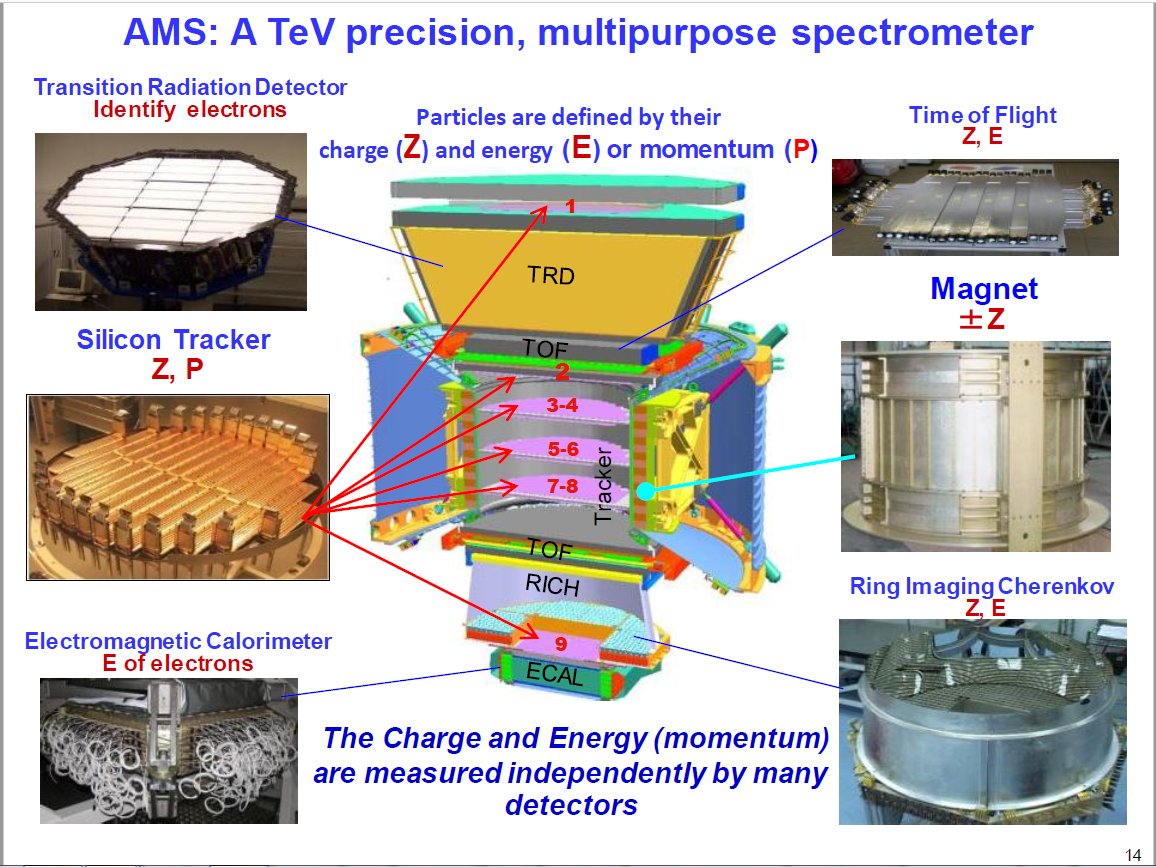It was some ninety years ago now that physicist Paul Dirac first suggested the existance of anti-matter and only a little more than a year later that another physicist, Carl Anderson observed anti-electrons (he called them positrons) in cosmic rays striking the Earth. In the years since then physicists have not only observed many different anti-particles but actually produced them using particle accelerators like the Large Hadron Collider (LHC) at CERN. We also know that the collisions of cosmic ray particles in outer space produce single anti-particles because we often observe them as well.

In fact all of the experiments we have performed with our particle accelerators, and all of the theories we have developed tell us that there should be exactly as much anti-matter in the Universe as there is matter. The big bang should have produced just as much anti-matter as matter. But there certainly aren’t large amounts of anti-matter, not anywhere around Earth at least.
The logic goes like this: The Earth is made of matter and since the solar wind is in contact with the Earth’s upper atmosphere without causing matter/anti-matter annihilation it must be made of matter as well, so the Sun is made of matter. Since the solar wind is also in contact with everything else in our solar system as well all of the planets; moons and etc must be made of matter just as the Earth is. (Let’s not forget that we have now landed probes on several other bodies so they certainly aren’t anti-matter)

We can even go further because the solar wind reaches out into the interstellar medium where the gas and dust particles must be made of matter or again they would interact with the solar wind. Finally that means that, since all the solar winds from all of the other stars in our galaxy are also in contact with the interstellar medium all of the stars in our galaxy must be made of matter.
What about other galaxies? You may ask. Could there be entire anti-galaxies made of anti-matter out there? And if so, how would we know? That question has been the subject of much debate over the last half a century.
Again, here’s the logic: if anti-galaxies do exist then they must have anti-supernova that produce anti-cosmic ray nuclei just as normal cosmic ray nuclei are produced in our galaxy. Eventually a very few of those anti-cosmic ray nuclei will find their way to Earth and if our scientists could find a single undeniable anti-nucleus that would be strong evidence that there are anti-galaxies with anti-stars out somewhere out there.
That’s the goal of the Alpha Magnetic Spectrometer (AMS-02) currently operating aboard the International Space Station (ISS). Launched into space by the space shuttle on the 16th of May in 2011 the AMS-02 has been observing cosmic ray particles above our atmosphere now for eight years.

(By the way, yes there was an APS-01, a Proof-of-Concept model that went into space with the Space Shuttle Discovery in 1998.)
The AMS-02 operates in many ways like one of the detectors at CERN or one of the other high energy physics labs. First ignoring any particles that do not pass from the top to the bottom the AMS-02 measures the time each particle takes passing through, that gives particles velocity. At the bottom the particle then enters a calorimeter which measures the particles energy. Once you know the velocity and energy you can calculate the mass and together they tell you what kind of particle it is.

Finally the whole detector is surrounded by a large permanent magnet. The magnetic field will bend the path of charged particles and if you know what kind of particle it is, and the direction it bends you know whether it’s matter or anti-matter.
AMS-02 has spent the last eight years searching for an anti-helium nucleus and so far found nothing. Physicists feel that this result puts a very strong constraint on the possibility of large amounts of anti-matter existing anywhere in the observable Universe. It really appears that for some reason still unknown the big bang produced only matter, even though much less powerful interactions since then have always produced matter and anti-matter in equal parts.
If you’d like to learn more about the Alpha Magnetic Spectrometer (AMS-02) click on the link below to be taken to NASA’s webpage for AMS-02.
There is obviously still a lot to be learned about how our Universe came into being.
